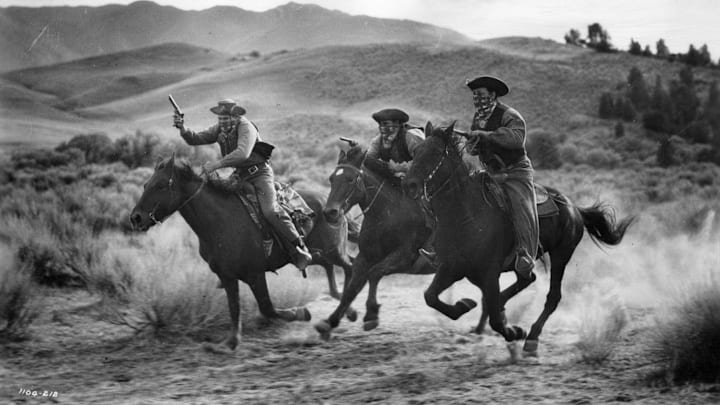Throughout the years there have been countless adaptations of tales from the famous American West. From the quick draw pistol face-offs to the cattle rustling outlaws, you'd think that all the secrets of the "Wild West" would be exposed, right? Well you'll learn that not everything is as it seems as we go through some of the biggest misconceptions of the open range.
Stetson and Hyer
The first thing that most people think of when it comes to cowboys is the classic cowboy hat, tall, finely stitched cowboy boots and a whole lot of fringe and embroidered embellishments.
While the tassles and embroidered button down shirts were largely products of Hollywood engineering, the cowboy boots and hats were very popular, but not until the "Wild West" era was dying down.
Most cowboys preferred Wellingtons as their footwear until the Spanish inspired cowboy boot was commercialized in 1875.
Cow folk did eventually evolve into the Stetson wearing cattle drivers today, but the cowboy boots and hats we know and love today weren't actually invented and seen in action until the late 1800s.
Before 1865, when the first cowboy hat came into market, cowboys usually opted for a simple bowler hat, specifically for their durability and tendency to stay on one's head while riding like the wind on horseback.
Butch Cassidy, The Sundance Kid and Billy the Kid were among the most famous cowboys to wear bowler hats while riding the range.

Quick-draw Killed the Outlaw
Every western film that was ever made includes a variation of a scene where the jingle of spurs is met with the cock of a pistol as the hero and the villain stand off at high noon. Whether it be in the middle of a dusty town square, or in the midst of sagebrush, the impression that anyone and everyone owned some sort of firearm to fend off the outlaws, Native Americans or wild animals seems to be a mighty prevalent one.
However, there were quite a few gun laws in the old west that regulated firearms, some towns even going so far as to create a weapon checking system which required gunowners to check their weapons in exchange for a token to be returned upon departure.
Though there are exceptions, such as the O.K. Corral incident with the Earps and Holliday, where the quick draw myths usually stem from, there are very few instances where conflicts at high noon actually happened, and when they did, the pistols were not that accurate anyway.

Saloons and Bank Robberies
Despite popular misconception, bank robberies were not all that common. As it was, banks were pretty difficult to rob because they were usually located in the center of town where new faces were immediatley noticed,and the safes inside were tricky to get into even with dynamite. Not to mention that the the safe mostly stored important documents and non-monetary valuables, so no cash could actually be stolen.
Between 1859 and 1900 there were as few as 10 bank robberies. The myth of these crimes partly came from some raids by James Gang and Quantrill’s raiders, but are mostly sourced from the minds of writers. As disappointing as this news is, even more surprising is the fact that saloons didn't even have swinging doors. No dramatic cowboy entrances here.

Cowboys and Indians
The final myth to be busted is out on the open range. Most western films depict cowboys racing across an open range, guns a-blazing while miles off, Native American armies are flooding the plains with war cries and battle weapons.
This myth comes from paintings, old dime novels and Hollywood imagination. Certainly the two civilizations had their differences, however, most of the time confrontation was few and far between.
The Natives rarely if ever ambushed wagoneers traveling across the plains, and if they did approach them, it was to trade goods. The greater threat to the lives of cowboys in the Old West came from river crossings, hunting accidents or from falling off your own horse.

